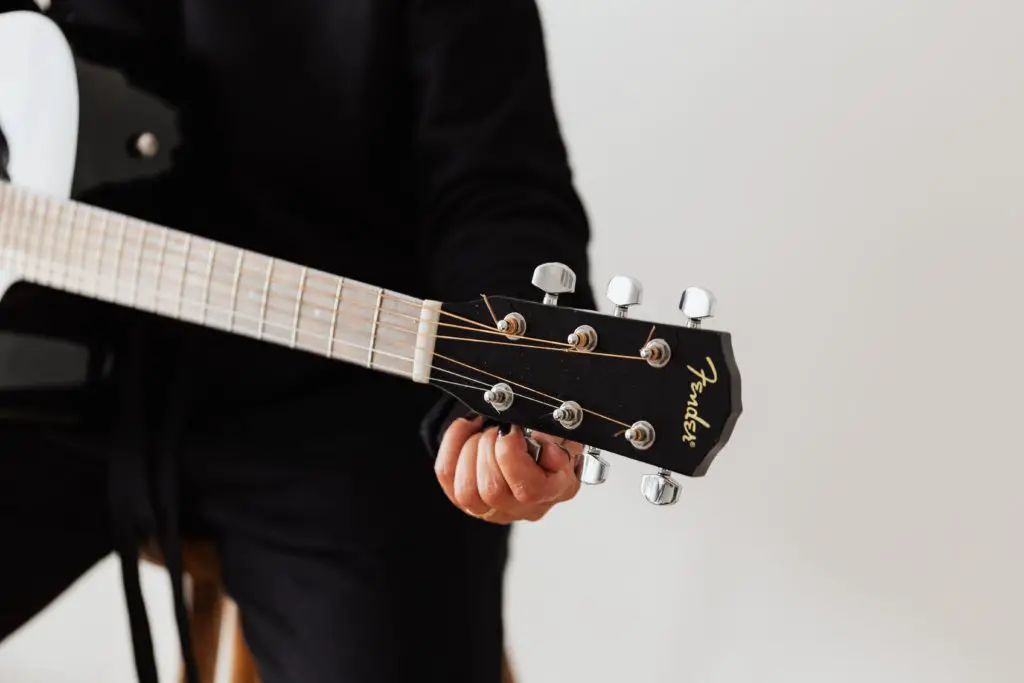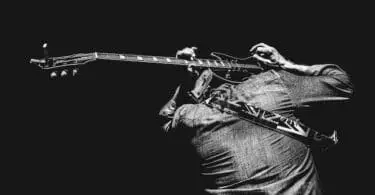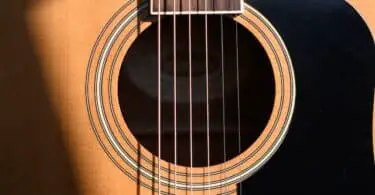A guitar is a flexible instrument capable of producing some of the finest music even in today’s modern age. This stringed instrument, however, might be the hardest to master.
It is always necessary to tune your guitar before you begin playing it. With a tuner, you can quickly and accurately determine the correct pitch. If you don’t have a tuner, you’ll have to learn to tune your guitar by ear.
When you play an out-of-tune guitar, it will not sound right. If you don’t tune your guitar, the songs you enjoy playing will sound bizarre and won’t have the same flare as they should be when tuned perfectly.
So how do you tune a guitar without a tuner? You should first play the 5th fret on the low E string. Then, at the 5th fret, match the open A string to the low E string. To tune the D and G strings, repeat the process. To tune the B string, fret the G string at the 4th fret. To tune the high E string, return to the fifth fret. Strumming a few chords can help you fine-tune your tuning.
Quick Links
How Will You Tune a Guitar Without a Tuner?
The only material you need to learn how to tune your guitar without a tuner is your guitar. When you have your guitar in hand, you should become acquainted with all following areas of it:
A standard guitar has six strings running through the bridge from its neck.
Tuning keys are situated at the guitar’s head, and each string is linked to its tuning key. Turning these keys tightens or loosens the string, causing the pitch to change. A tighter string produces a higher-pitched note, whereas a loose string produces a lower-pitched note.
Frets are the metallic ridges that run over the guitar’s neck. When you press a string against a fret, the string length changes, resulting in a different sound as you play.
To start tuning a guitar, you must first select what tuning you want in the instrument. You may pick from a variety of tunings for both acoustic and electric guitars. These tunings lend themselves to various musical genres, including jazz, classical, and even flamenco.
Regular Tuning
When you tune your guitar to regular tuning, the lowest and highest strings will be E notes. There are two octaves between these E strings. As a result, your notes going highest to lowest follow the pattern E-A-D-G-B-E. As a general rule, you should begin tuning your guitar with the low E string. Strings are counted from one to six, starting with the highest note. Therefore the low E string is the 6th. And It’s also the thickest, which makes it simpler to tune and can provide a perfect pitch while tuning the remaining of the guitar.

Tuning Process
- Begin on the 6th string, commonly termed as low E string. Locate the 5th fret. The fret is the gap between the 4th and 5th metal ridges on the neck of a guitar. Strumming your E string softly, press it down into the 5th fret. You’re now utilizing your E string to play an A note.
- So you can now play an A note on the E string, but what about the other strings? You started to play an A note on the E string and 5th fret because the A string is the next over. So what you need to do now is complement the pitch of your 5th string to your A note that you played on the 5th fret with your low E string.
- Once you’ve held down your low E string on the fifth fret to make an A, hum that note, so you know what it sounds like. Next, strum the 5th string, ensuring that it’s open. When you play the guitar with an open string, your string is not in contact with any other part of the guitar. You may use tuning levers at the head of the guitar’s neck to tune your A string till it sounds like the low E string played using the 5th fret.
- Once you’ve tuned your A string with the low E string, you may keep repeating the technique to tune the rest of the strings on your guitar. For example, in tuning your D string, do the following:a.) First, to get a D note, hold down the 5th fret and the A string simultaneously.
b.) Then, match the sound of your note from the fretted A string to your D string, which is the 4th one. - Besides the B string, you may utilize this approach for the G string and any other notes. However, you must be aware of a distinct procedure for tuning the B string when using this method. If you wrongly tune the B string, the high E string will be tuned when you play.
- To tune the B string, use the 4th fret to hold down its G string companion. It is in contrast to utilizing the 5th fret for other notes. Please make a note of this since it is essential. Striking your G string on the 5th fret will result in the incorrect tone for tuning the B string. As a result, this will also be inaccurate when you attempt to tune the high E string.
Maintaining Your Guitar’s Tune
You’ll want to maintain your guitar in tune for as long as it takes, now that you’ve discovered how to tune it by ear. There are numerous things you may do to keep the guitar in tune for a more extended period.
- Change the strings regularly — When your strings begin to lose pitch or sound dull, it’s better to replace them. However, even with frequent tuning, old strings may struggle to stay in tune.
- Stretching the strings – Before replacing strings, ensure you stretch the set of new out. You can accomplish it by playing with them or lightly pulling them on.
- Take proper care of the guitar — Humidity and temperature fluctuations may also impact how your instrument plays, so avoid exposing it to these factors. Instead, wipe down your strings with a towel once you’ve done playing for the day. When not using it, you should store the guitar in a bag.

Why Learn Tuning by Ear Technique?
Tuning your guitar with an app or smart device is simple. There are inexpensive software and mobile apps available. These tools detect the guitar’s sound and educate you on how to adjust the tuning pegs properly. Now, why should learning to tune a guitar by ear be empowered?
Tuning by ear will provide a good basis for pitch ear development. Learning the connections involving pitches and notes enables you to be more sensitive to the guitar’s tone. You would have a good set of pitch abilities without needing lessons or video tutorials if you routinely tune your guitar by ear every day.
After a month of learning the standard tuning approach, you should be capable of playing a string once and quickly detect if your guitar is out of tune. With a bit more experience, you might be able to determine which strings sound different from the note you desire right away.
Tuning by ear sets the groundwork for interpreting the sounds by just listening to the guitar. You may even utilize a collection of abilities like these to acquire the perfect pitch if you wish to focus on it.
Some Final Words
Learning to play the guitar may be difficult for you, but understanding how to tune your guitar shouldn’t be hard at all. A tuner is only a method to ensure that your guitar is tuned in perfect pitch, but it is also reasonable to make it sound wonderful without one.
Most of all, by tuning your guitar with your ears, you’ll discover more about notes, chords, and strings along the process. Enjoy tuning!






